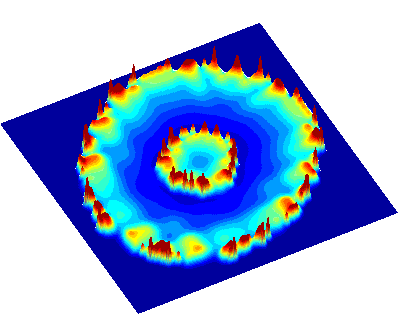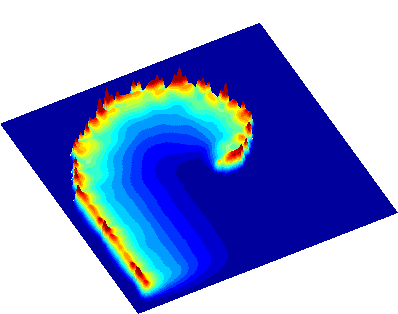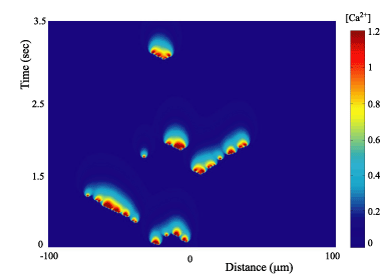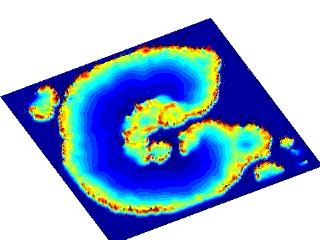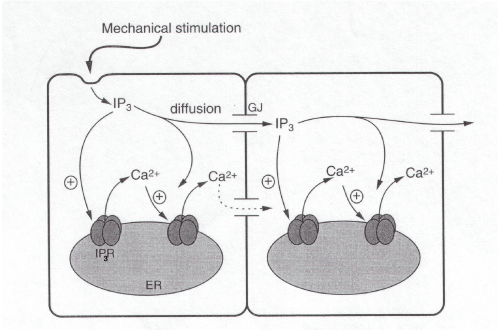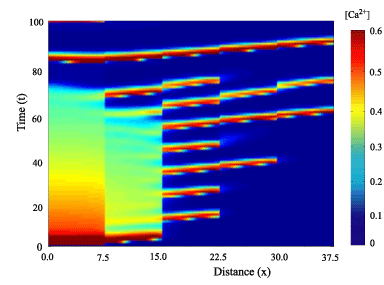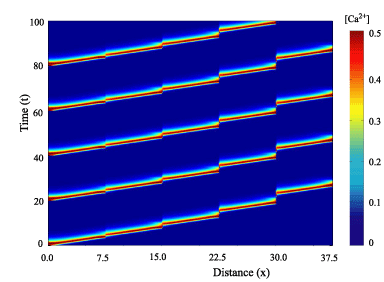For the most recent set of experimentally determined parameter values the DYK model supports an interesting form of bifurcation structure including global bifurcations. A variety of propagating patterns are sustained by this model including travelling pulses and periodic travelling waves, 2n- periodic orbits and 2n-homoclinic orbits. Moreover, using a kinematic theory of irregular wave propagation it is possible to predict the existence of a non-periodic travelling wave (that connects two periodic wave trains).

Calcium is removed from the cytosol in two principal ways: it is pumped out of a cell and is sequestered into ER/SR. Calcium influx also occurs via two principal pathways: inflow from the extracellular medium through Ca2+ channels in the surface membrane and release from internal stores.



 Periodic travelling wave
with irregular spaced release sites
Periodic travelling wave
with irregular spaced release sites 
